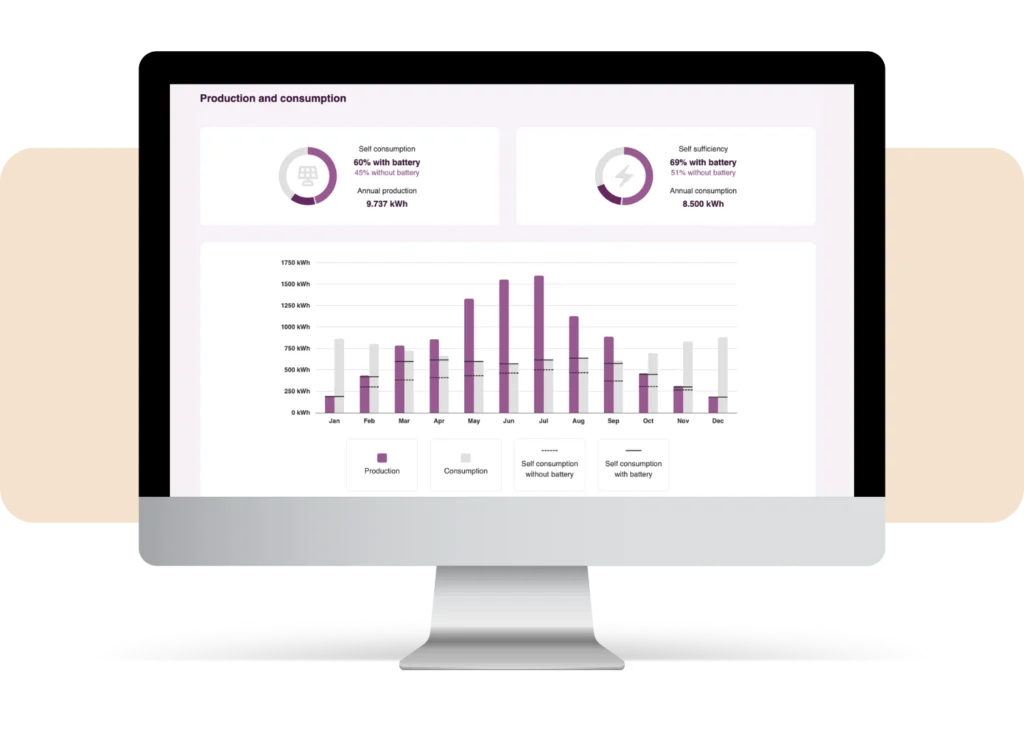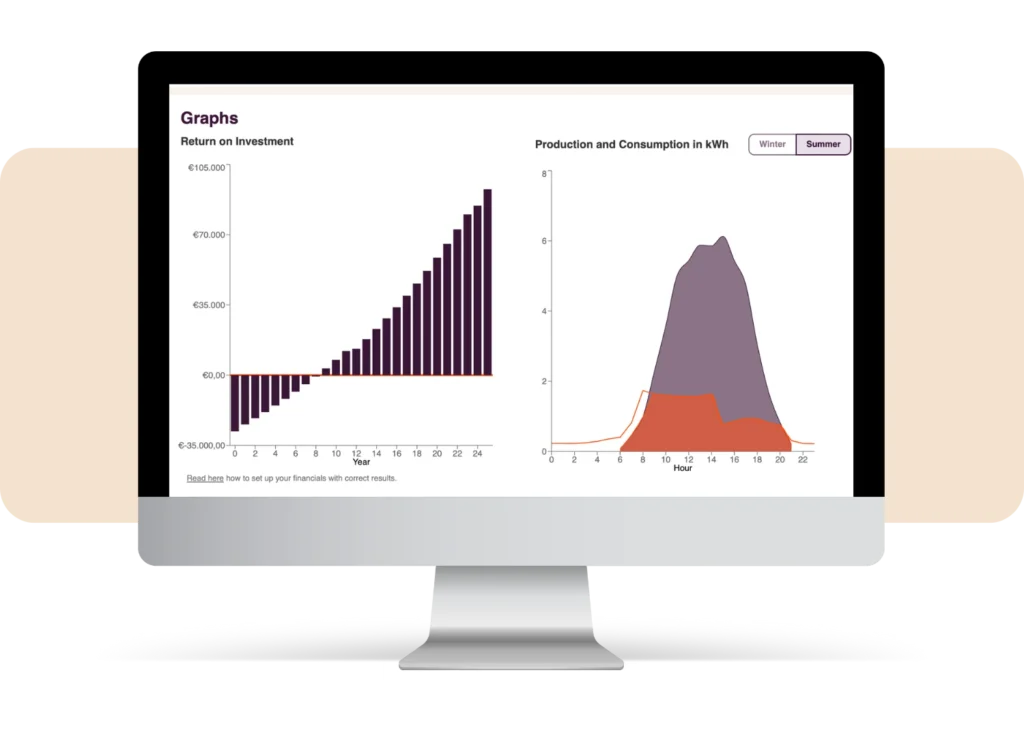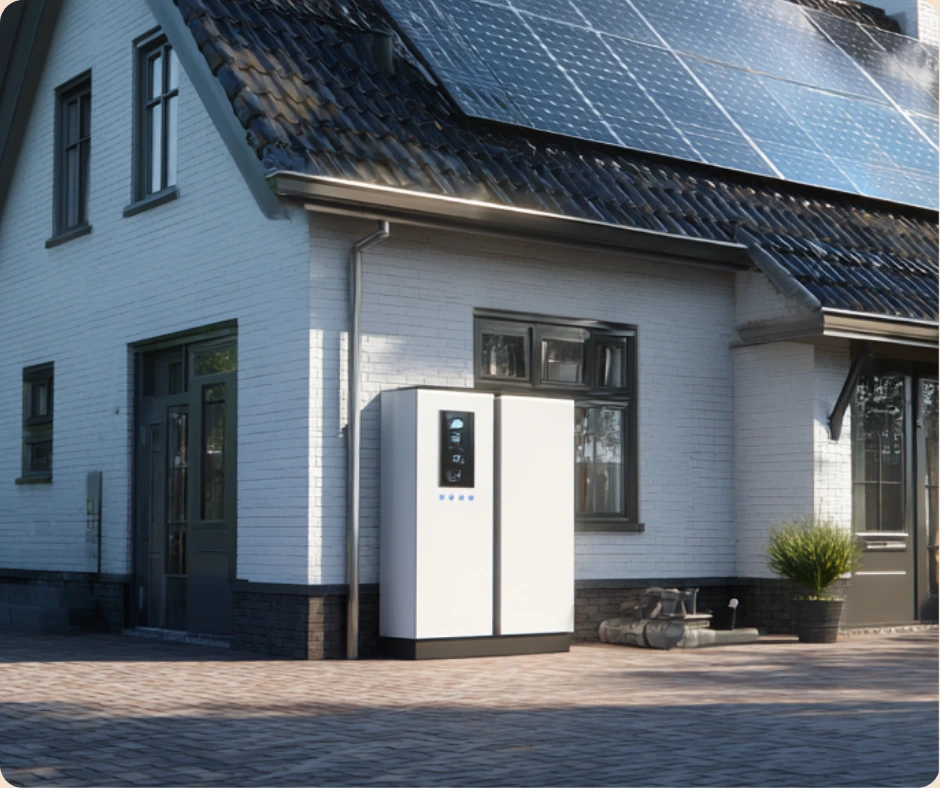The home battery has become an indispensable part of a sustainable energy system. In many countries, this has been the case for years.
Now that the end of the net metering scheme in the Netherlands is in sight, battery sales are increasing here as well. More and more homeowners want to smartly store their self-generated solar energy, especially in combination with dynamic energy contracts. This offers installers a great opportunity, provided you can explain and substantiate the benefits effectively.
With Solar Monkey, you can easily calculate what a battery delivers for your customer. This way, you not only create a sharp offer but also a convincing story that builds trust. Trust ensures you win the contract and keep your business healthy and profitable.
Arguments for Buying a Battery
There are various reasons why customers want to purchase a home battery. However, in the sales process, the financial advantage is often emphasized. That’s a pity, because this means leaving value on the table.
As Matthijs Groot says: NIVEA – Not Filling In For Another. So always ask thoroughly about what is important to your customer.
- Increasing Self-Consumption
For most people, this is the most important argument: keeping generated solar power under one’s own roof and using it yourself. Especially in combination with dynamic tariffs: this way, you avoid unfavorable feed-in tariffs, store free solar energy, and need to buy less expensive electricity. - Emergency Power Supply
A battery can also serve as a backup during power outages. Although the Dutch grid is relatively quite reliable, Netbeheer Nederland recently warned that a 72-hour power outage is a real possibility. Many providers cleverly play into this by emphasizing this risk. - Financial Advantage
Of course, money continues to play a role. Customers often look at ROI or payback time. Yet this argument often receives too much emphasis in installers’ offers. Don’t position the battery exclusively as a “box that generates money”, but as a system that offers comfort, security, and independence. This gives your customer a more complete and valuable picture. - Personal Motivation: Status or Hobby
An often forgotten, but important motive: interest and pride. In a young market like home batteries (in the Netherlands), there are many consumers who simply find the technology fascinating. Your enthusiasm as an installer is contagious. And don’t underestimate how proud people are when they can show off their smart battery at a birthday party 😉.
We previously had a beautiful interview about these motives with two true experts. Read the interview with Matthijs Zohar-Groot and Yoeri Kruissink from Greensolvers.

Calculation of Self-Consumption
The most important factor for battery yield is self-consumption: how much of the generated electricity the customer uses directly or utilizes via the battery. Too often, a standard percentage is assumed, but this is rarely accurate. Self-consumption strongly depends on the moment of generation and the consumption profile.
With Solar Monkey, you can calculate this exactly:
- Choose a standard profile or upload an exact consumption profile based on smart meter data.
- The software automatically calculates the share of self-consumption without and with battery.
- By selecting different battery sizes, you can directly see the effect on self-consumption.
You’ll notice that there’s a natural maximum: a larger battery doesn’t always lead to higher self-consumption. In summer, for example, you generate more energy than you can consume at night, which means the battery doesn’t fully discharge. The next day, it therefore cannot use all its capacity to store the generated solar energy. To optimally dimension self-consumption, the night consumption is particularly relevant. With Solar Monkey, you can see at a glance what the ideal battery size is for your customer.


Calculation of Self-Sufficiency (Energy Independence)
In addition to self-consumption, Solar Monkey also calculates self-sufficiency: the extent to which a customer is independent of the electricity grid.
For clarity, here are the definitions side by side:
- Self-consumption = self-generated and consumed energy / total generated energy
- Self-sufficiency = self-generated and consumed energy / total consumed energy
Self-sufficiency thus shows to what extent a household covers its own energy needs. A value of 100% means that theoretically an ‘off-grid’ state is possible: being completely independent of the grid.
In practice, however, this is barely achievable in the Netherlands. Solar panels generate only about 15% in winter compared to summer production. To be completely independent, you would need an enormous number of panels, resulting in generating up to seven times more energy in summer than you can use. And you cannot feed this back into the grid when you are off-grid. In short: a waste of energy.
At Solar Monkey, we therefore consider an off-grid solution in the Netherlands primarily an interesting thought exercise, but not realistic.
Making Money with Dynamic Tariffs
With the tariff upload function in Solar Monkey, you can incorporate the influence of dynamic energy tariffs into your calculation.
This gives you a realistic picture of the financial yield of a battery, aligned with actual consumption and current market prices.
We are currently working on a new version of this functionality, which will allow dynamic tariffs to be taken into account even faster and more accurately.
🚀 Coming Soon: Improved Financial Calculations
In a few months, we will launch a renewed battery module in Solar Monkey. What can you expect?
- Easier compilation of the energy consumption profile with minimal input (AI works wonders 🙂 ).
- Simulation of energy prices before and after a contract change, so you can clearly show the impact of a new energy contract.
- Direct insight into the financial impact of a battery.
- A first view of expected earnings based on imbalance market data (based on historical data, of course without guarantees 😉).
Hi, I’m Eelco Audiffred, Account Executive at Solar Monkey. Curious about the smartest way to calculate battery yields? Via the button below, you can schedule an appointment with me.
Eelco Audiffred
Account Executive

Conclusion
The battery is not just a technical extension of the PV system, but also an opportunity to offer added value to your customers. With Solar Monkey, you provide well-founded advice, calculate the optimal battery size, and show exactly what the investment yields – with or without a dynamic tariff.
Stay ahead of the competition and create a truly convincing home battery offer?
FAQ
Self-Consumption = Self-Consumed Energy / Total Generated Energy
Self-Sufficiency = Self-Generated and Consumed Energy / Total Consumed Energy
Self-Consumption shows how much of your own production is used directly. Self-Sufficiency demonstrates how independent you are from the electricity grid.
